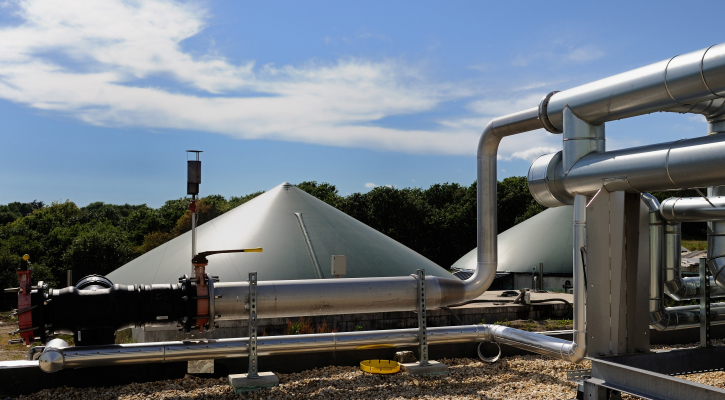Call for project closed the 30 May. 2015

Biogas is a source of renewable energy that results from the decomposition of organic matter (agricultural or industrial waste, etc.) by microorganisms in an environment without oxygen. It can be used for heat and electricity or, after purification, as a combustible and a replacement for natural gas.
This “green” energy source forms an integral part of national-level goals for attaining renewable energy production. The field is being ambitiously developed in France, aiming for 10% of ga
Monitoring the biological environment inside the methanizer involves several variables. Some can already be measured on a continuous basis (pH, temperature) while others require the operator to take a sample and to conduct an analysis either onsite or at an external lab.
The negative consequences of this situation are that:
Biogas is a source of renewable energy that results from the decomposition of organic matter (agricultural or industrial waste, etc.) by microorganisms in an environment without oxygen. It can be used for heat and electricity or, after purification, as a combustible and a replacement for natural gas.
This “green” energy source forms an integral part of national-level goals for attaining renewable energy production. The field is being ambitiously developed in France, aiming for 10% of gas in the network to be renewable by 2030.
Managing what happens in the digestion unit (kinetics, competing mechanisms) is one of the major issues involved in improving the optimization and the availability of a production plant and the site’s visibility. This technical mastery comes from the ability to “take the pulse” of a methanizer at any time in order to predict its biological behavior based on the substrates that are put into it.
Recent developments in connected systems as well as low-cost nanotechnologies for measuring functions on-site could make it easier to considerably improve and to simplify the measurement of key parameters involved in methanization.
Monitoring the biological environment inside the methanizer involves several variables. Some can already be measured on a continuous basis (pH, temperature) while others require the operator to take a sample and to conduct an analysis either onsite or at an external lab.
Also, certain criteria within the digester must be modified based on the importance of the problems encountered. Earlier identification makes it more likely that the problem will be solved.
These developments could involve new or improved measurement probes, including probes that are stable in difficult or corrosive environments such as substrates. They should be robust, reliable and require minimal maintenance.
The applications will be assessed based on several criteria.
A jury composed of experts from the ENGIE GROUP and its subsidiaries as well as local and national economic actors will select the winning projects.
Composition of the jury*:
This call for projects is intended to be a significant innovation accelerator.
The selected projects will benefit from the following:
* External and internal events organized by the ENGIE Group
Sign up for the ENGIE Innovation Newsletter